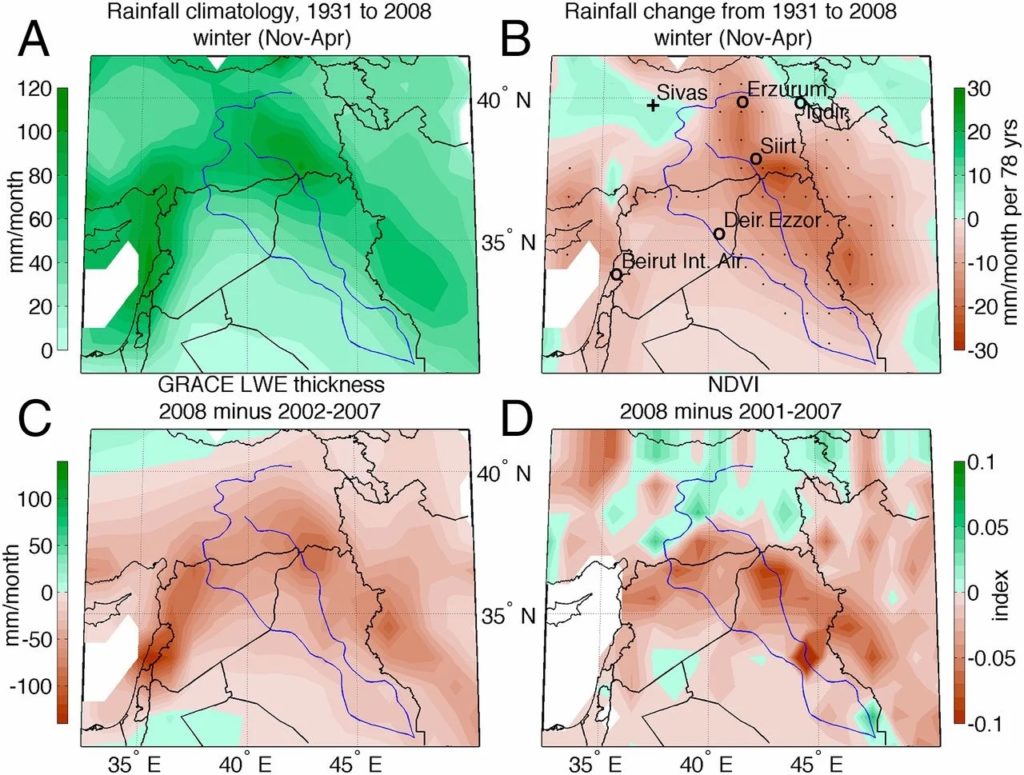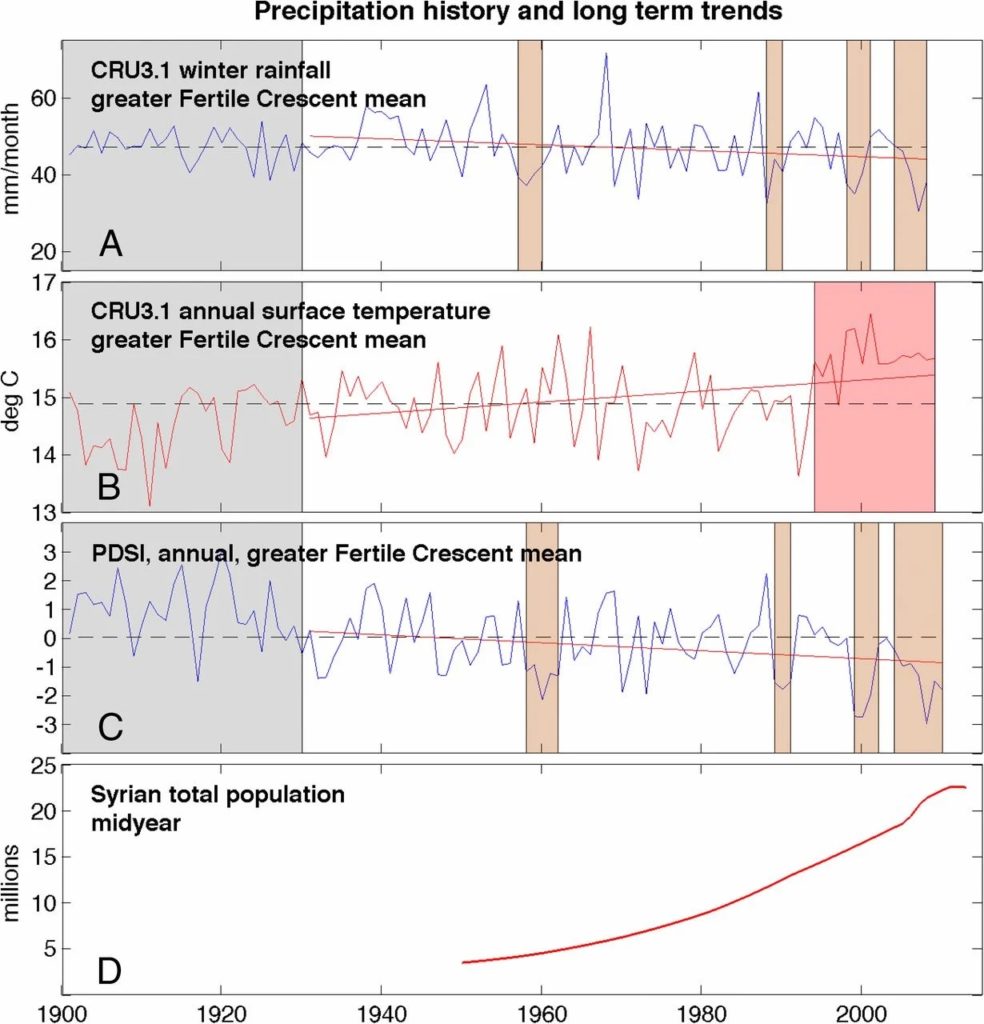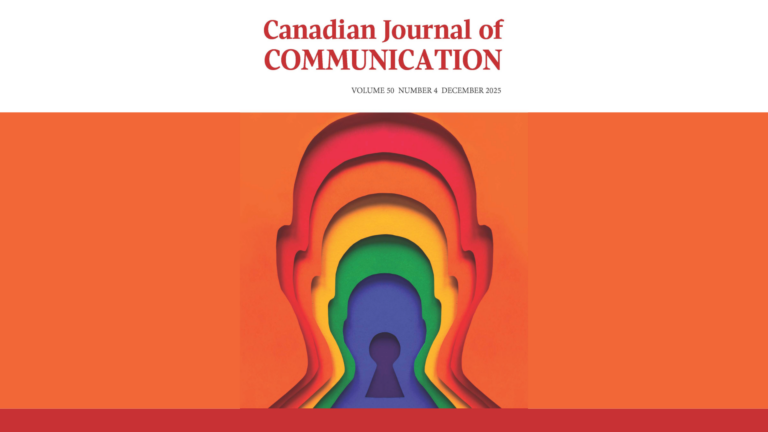During the talk “Animal Death as National Debility: Climate, Agriculture and Syrian War Narrative,” Neel Ahuja asked the audience to re-examine the idea of the Syrian War as the first-ever “climate war.” The UC Santa Cruz Professor was invited for the fifth event in the series “Critical Anthropocene Speaker Series: Global, Decolonial, Critical Race Approaches for a Multispecies World” because his work aligns with the mission of the groups that co-sponsored the event: Society, Politics, Animals and Materialities (SPAM), the Critical Anthropocene Research Group (CARG), and the Colonial, Racial, Indigenous Ecologies Working Group (CRIE). Referring to his own paper published in 2020, Ahuja argued that many commentators used tropes of animal death, forced migration, and human disability as tragedy to frame the Syrian conflict as one of “national debility.” These narratives, he claimed, only serve to obfuscate critical analyses of capitalist agriculture, the Assad government and international interventions.
One example of this representational strategy can be found in Samar Yazbek’s memoir The Crossing: My Journey to the Shattered Heart of Syria, where the journalist describes conflict-torn Syria as a “dismembered collection of body parts, the head missing and the right arm dangling precariously. Then you notice a few drops of blood slowly dripping from the frame, disappearing as they are absorbed by the dusty soil below.” As Ahuja recounted, Yazbek uses the imagery of drought, blood, animal death, and dismemberment to paint a picture of slow death. This climatic/animal war narrative stemmed partly from Colin Kelly’s study of drought and rainfall patterns in Syria between 2006 and 2009, which was later picked up by NGOs.. After this, mainstream media spread a story in which mass sheep death and wheat loss, along with increased migration from Iraq, led to the uprisings in Syrian urban areas, and in turn, to national civil war. But Ahuja questions this narrative because the extent of animal deaths suggested by Kelly is not reflected in the granular data, which means that the argument that sheep death led to rural-to-urban migration is hard to maintain. In fact, Ahuja suggested that there are indications that many herders only abandoned sheep herding after the war in 2012 and not before. Ahuja also argued that many people were already protesting the regime in their home locations, prior to migrating to urban cores, which complicates the narratives of climate change leading to urban migrations.

Similarly, many writers deployed the trope of disability as tragedy to talk about national debility and civil war. John Wendell, for example, uses the story of one individual farmer from Aleppo to argue that drought forced millions to migrate while ignoring that the real cause was a siege of his village by ISIS. This kind of generalization from individual anecdotes serves to frame the Syrian conflict as one of science, climate change, and animality – instead of a political struggle. Commentators like Wendell triggered a representational strategy that “transform… widely distributed debility into a recognized subject of national disability (861).” The picture of disability conjured in these narrative follows liberal humanitarian ideas, that is, they are less interested in supporting disability rights than in crystalizing “an avatar of linked ecological and social processes that systematically produce violence.” From animal death to the figure of the disabled refugee, these “avatars” serve as icons of insecurity that sidestep “revolutionary critiques of the government.” This is why Ahuja argues in his paper that “there is a slippage from politicizing the nonhuman force of climate change to writing the revolutionary subject out of the political struggle over infrastructure.” Deploying climate change as a sui-generis origin, climatologists, international relations scholars, military officials, journalists, and academics ignore a much-needed materialist critique of capitalist agriculture, or of what Julie Livingston calls as the economic development of “self-devouring growth.” This narrative also conveniently “postpone the ideological questions” of the Syrian uprisings against the Assad government, effaces the economic grievances fueling political rebellion, and obscures a larger biosphere of war that conducts “atmospheric violence”.

Amidst sensationalist images of shrivelled olive trees, mutilated bodies, and skies on fire, Neel Ahuja’s talk was a brilliant reminder of the importance that representational strategies have in war. The Syrian civil war should be reframed to include the material, economic, and ideological factors that animated it, instead of merely focusing on its climatic aspect. Described as the first climate war ever, this conflict has been framed to induce a sense of impending doom among Western spectators. But this orientalist and Malthusian argumentation ought to be curtailed if we want to understand Syrian history and war in our times of climate change. Thus, Ahuja concluded the talk by turning inward and asking what academia, and the field of animal studies in particular, can do to criticize these mainstream narratives. For Ahuja, it is crucial that the field pays attention to post-colonial and agrarian studies that take into account the cycles of food production across different geographies and the connections between urban and rural communities. Animal studies and disability studies scholars have a responsibility to rewrite the revolutionary subject into the political struggle they initiated by considering accounts of local activists, farmers, and refugees.




